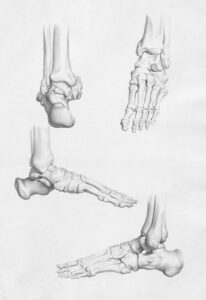Honeybees are truly fascinating creatures, exhibiting behaviors and communication methods that are both sophisticated and efficient. At the heart of their ability to recognize their hive lies a combination of chemical, visual, and behavioral cues that ensure they return to the right place, every time. The Role of Pheromones is central to the hive’s identity. Each hive emits a distinct pheromone profile, thanks to the queen bee and the workers who release these chemicals. The queen’s pheromone, known as the “queen substance,” is perhaps the most critical, influencing the behavior and physiology of the other bees, maintaining the social structure, and even suppressing the development of ovaries in worker bees. This unique chemical signature acts like a scent-based GPS, guiding bees home and preventing them from accidentally entering the wrong hive—a mistake that could be fatal due to defensive guard bees. Visual Cues and Landmarks play an equally crucial role in hive recognition. Honeybees possess excellent vision, with compound eyes that detect movement and patterns effectively. They are particularly adept at recognizing colors, with a preference for blue and ultraviolet hues, which help them identify flowers during foraging. When it comes to finding their hive, bees rely on prominent landmarks. For instance, a tree, a rock, or even man-made structures like fences can serve as waypoints. They memorize these landmarks during their orientation flights, which are initial flights taken by young bees to map out the area surrounding their hive. Through trial and error, bees learn to associate specific visual patterns with their hive, allowing them to pinpoint its location even when it’s surrounded by other hives or in a complex environment.
One fascinating behavioral adaptation is the Waggle Dance, a communication method that transforms spatial information into a dance language. When a scout bee finds a rich food source, it returns to the hive and performs this dance to inform other bees of the location. The dance conveys the distance and direction of the food source relative to the sun’s position, using the angle of the waggle run to indicate direction and the duration to indicate distance. This dance is not only used for food location but also when identifying potential new home sites. The waggle dance is a testament to the bees’ ability to process complex spatial information and communicate it effectively to the colony.
Within the hive, Internal Hive Mapping is a critical aspect that ensures smooth operation. Bees perform orientation flights to familiarize themselves with the internal layout. During these flights, they learn the positions of brood cells, honey storage areas, and the queen’s location. This internal map is crucial for efficient functioning, as bees need to navigate quickly within the hive to perform their duties, such as feeding larvae, cleaning, or storing nectar. By understanding the hive’s layout, bees can also respond to emergencies, such as defending against intruders or relocating resources if needed.
Additional Insights into Hive Recognition
The Role of Memory and Learning
Honeybees possess an impressive memory capacity, which they use to remember both the location of their hive and food sources. Research has shown that bees can learn and remember complex patterns and spatial arrangements for several days. This ability is supported by their mushroom bodies—structures in their brain associated with learning and memory. Bees regularly update their mental maps based on new experiences, allowing them to adapt to changes in their environment, such as new obstacles or altered landmarks.
For example, a study conducted by researchers at the University of Sussex demonstrated that bees could remember the location of a food source even after several days of bad weather, when foraging was impossible. When the weather cleared, the bees resumed their search for food exactly where they had left off, showcasing their remarkable memory skills.
Communication Beyond the Waggle Dance
While the waggle dance is the most famous form of bee communication, it’s not the only method. Honeybees also use a series of other dances and movements to convey different messages. For example, the “round dance” is used for nearby food sources and does not specify direction. Instead, it encourages other bees to search for the source within a small radius. Furthermore, bees use vibrational signals, such as buzzing, to communicate urgency or alert others of a threat.
Additionally, bees employ a unique form of communication known as “trophallaxis,” where they exchange food and information by mouth. This exchange not only helps in distributing food but also in spreading chemical signals that reinforce the hive’s social structure and cohesion. Through these various communication methods, bees maintain a highly coordinated and efficient colony.
Adapting to Environmental Changes
As environments change, honeybees exhibit an incredible ability to adapt. For example, if a landmark is altered or removed, bees might rely more heavily on pheromone cues until they can establish a new set of visual markers. This adaptability is crucial in areas where human activity frequently changes the landscape. Beekeepers can assist bees by providing consistent visual cues, such as painting hives in distinctive patterns or colors, ensuring bees can find their way home even in dynamic environments.
A practical example of adaptation can be seen in urban beekeeping, where bees must navigate a complex environment of buildings and roads. Beekeepers in cities like London have reported that bees often use tall buildings and unique architectural features as landmarks, demonstrating their flexibility and adaptability in diverse settings.
Practical Tips for Beekeepers
- Maintain Consistent Hive Placement: Keeping hives in a stable location with consistent landmarks helps bees orient themselves more effectively. Avoid frequent relocation unless necessary. If relocation is unavoidable, move the hive no more than a few feet at a time to allow bees to adjust gradually.
- Use Distinctive Markers: Painting hives in unique colors or patterns can aid bees in recognizing their specific hive amidst many. This is particularly helpful in apiaries with multiple hives. Consider using bright colors that contrast with the natural environment for better visibility.
- Minimize Chemical Interference: Be cautious with the use of chemicals near hives as they can disrupt the pheromone signals. Opt for bee-friendly practices to maintain the hive’s natural scent profile. For instance, using organic pest control methods can prevent contamination of the hive’s chemical environment.
- Monitor Hive Health: Regularly check the hive’s health and the queen’s condition. A healthy queen ensures strong pheromone signals, crucial for hive recognition and cohesion. Conduct thorough inspections during times of significant environmental changes, such as seasonal shifts, to preemptively address potential issues.
- Facilitate Orientation Flights: Position hives in areas that allow young bees to conduct orientation flights safely. This can be achieved by providing open spaces with clear, distinguishable landmarks. Avoid placing hives in areas with excessive obstacles that might hinder young bees during their critical learning phase.
- Implement Seasonal Adjustments: Beekeepers should consider the seasonal changes in their environment and adjust their strategies accordingly. During spring and summer, when vegetation is lush, ensure there are enough natural landmarks. In fall and winter, when these landmarks might be less prominent, reinforce visual cues by adding artificial markers.
Case Studies and Examples
- Case Study: Urban Beekeeping: In urban settings, bees face unique challenges due to limited natural landmarks and increased human activity. A beekeeper in New York City successfully used rooftop gardens and distinct rooftop structures as visual markers, helping bees navigate the concrete jungle effectively. The beekeeper also collaborated with local schools to plant bee-friendly flowers on rooftops, providing additional foraging opportunities.
- Case Study: Agricultural Impact: In agricultural areas, the seasonal planting and harvesting of crops can alter the landscape dramatically. A beekeeper in Iowa found success by placing hives near perennial landmarks like windbreaks and water features, ensuring consistent orientation cues for the bees year-round. Additionally, the beekeeper worked with local farmers to create buffer zones of wildflowers around crop fields, supporting bee navigation and foraging.
- Case Study: Pheromone Disruption: A beekeeper in California experienced issues with bees drifting between hives due to nearby pesticide use, which disrupted pheromone signals. To combat this, the beekeeper initiated a switch to organic farming practices in collaboration with neighboring farms, significantly reducing chemical interference and improving hive cohesion. This cooperative effort not only benefited the bees but also enhanced the overall ecological health of the area.
Common Mistakes and How to Avoid Them
- Overcrowding Apiaries: Placing too many hives close together without distinctive markers can confuse bees, leading to drift (when bees enter the wrong hive). To avoid this, space hives adequately and use visual differentiation. Implementing a checkerboard pattern or alternating hive colors can help reduce confusion.
- Neglecting Hive Maintenance: A poorly maintained hive can lead to weakened pheromone signals. Regular inspections and maintenance help preserve the hive’s unique chemical signature. Ensure that hive boxes are clean and free from mold or other contaminants that could alter the scent profile.
- Ignoring Environmental Changes: Failing to account for changes in the environment, such as construction or vegetation loss, can disrupt bee navigation. Be proactive in adjusting hive placement or markers in response to such changes. Engage with local planning authorities to stay informed about upcoming developments that might affect the landscape.
- Underestimating the Importance of Queen Health: The queen’s health is pivotal to maintaining the hive’s pheromone profile. Regularly assess the queen’s productivity and replace her if necessary to ensure the colony’s stability and cohesion.
The Future of Hive Recognition
In the face of climate change and increasing urbanization, the challenges for honeybees continue to evolve. Researchers are exploring innovative solutions to assist bees in hive recognition and navigation. One promising development is the use of micro-sensors attached to bees, which allow scientists to track their movements and gather data on their foraging patterns. This technology can provide insights into how bees adapt to environmental changes and help develop strategies to support their natural navigation systems.
Moreover, advancements in artificial intelligence and machine learning are being applied to study bee behavior, offering deeper understanding of their communication methods and hive dynamics. By harnessing these technologies, we can create more bee-friendly environments and improve the sustainability of our beekeeping practices.
Community Engagement and Education
Educating the public about the importance of bees and their navigation systems is crucial for fostering a supportive environment. Community workshops and educational programs can raise awareness about the role of bees in ecosystems and the challenges they face. Schools and community centers can host beekeeping classes, teaching practical skills and promoting conservation efforts.
Additionally, partnerships between beekeepers, scientists, and local governments can lead to the development of urban planning strategies that consider bee habitats. By integrating bee-friendly practices into city planning, we can create spaces that support both human and bee populations, ensuring a harmonious coexistence.
In summary, honeybees have evolved a remarkable system of hive recognition that combines chemical, visual, and behavioral cues. By understanding and supporting these mechanisms, we can contribute to the health and productivity of bee colonies. Whether through practical beekeeping strategies, community engagement, or scientific innovation, our efforts can make a significant difference in the survival and success of these incredible insects.



